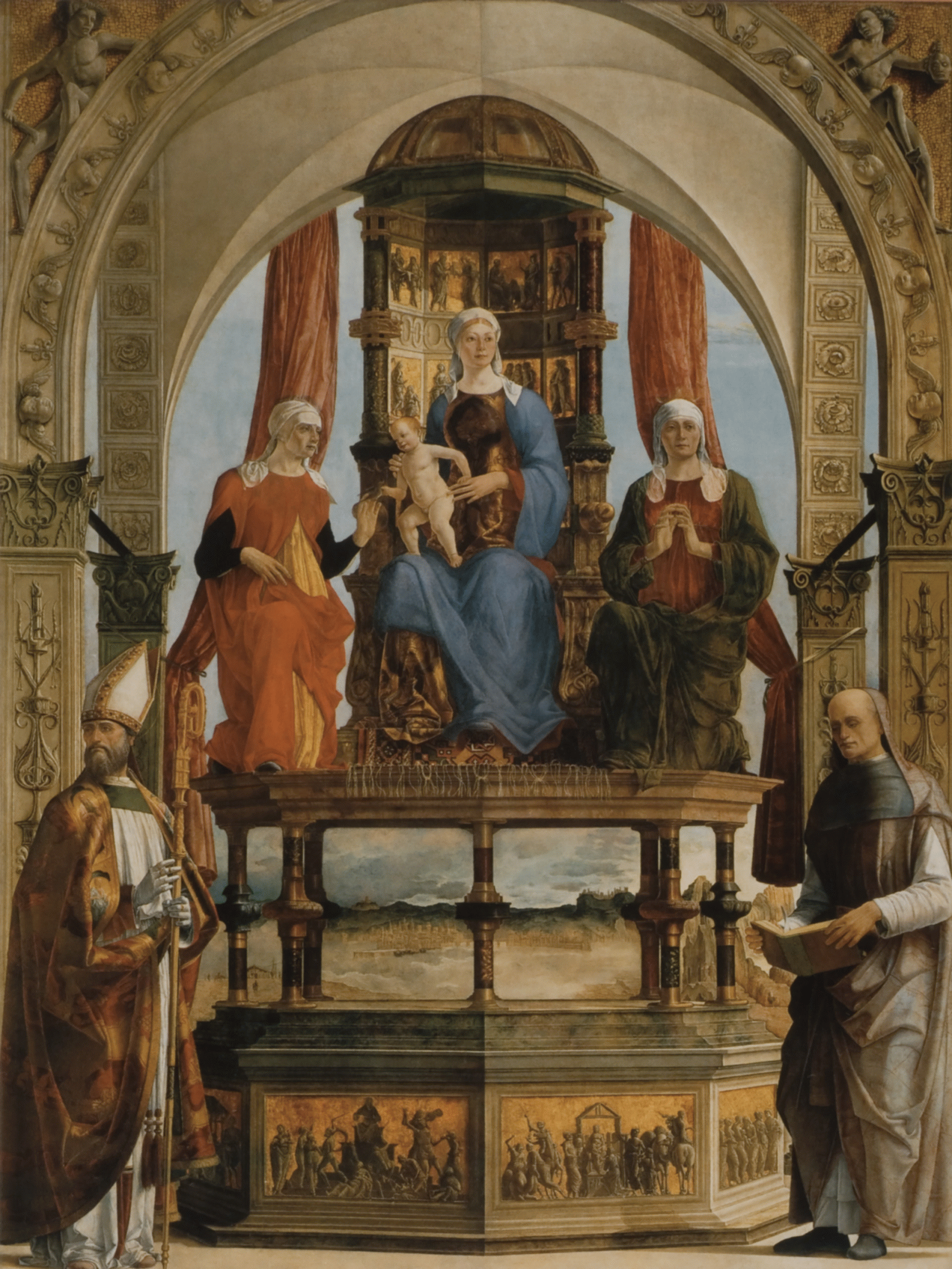Abendvortrag
Giancarla Periti: The Renaissance Afterlife of Ravenna

Ercole de’ Roberti, Pala Portuense, 1481, Milan, Pinacoteca di Brera
Ravenna's treasures have long occupied a crucial place in histories of Byzantine and Medieval art and architecture. The city's splendors are, however, totally absent in the art historical narratives of the Renaissance. Yet pre-modern artists studied Ravenna's heritage and saw the city as a site possessing an extended and colorful antiquity of classical, Early Christian and Byzantine forms. Likewise, travelers and scholars left admiring descriptions of Ravenna and its splendors despite the spoliation and recycling of its ornaments and precious materials through time. This lecture charts a series of visual interplays with Ravenna's heritage during the Renaissance, tracing renewed appropriations and interpretations of its Byzantine and Early Christian treasures in works made in various media. These instances of creative interaction with the city's splendors counteract the understated role of Ravenna's treasures in our current critical accounts, simultaneously mapping an enlarged artistic geography of the Renaissance.
Giancarla Periti is Associate Professor of Italian Renaissance Art at the University of Toronto.
She was educated in Italian and American universities (Ph.D. The Johns Hopkins University, 2003). Periti's research explores the dense intersections between images and texts, vision and space, media and making. She is the author of In the Courts of Religious Ladies. Art, Vision, and Pleasure in Italian Renaissance Convents (2016). She has forthcoming edited volumes with Alexander Nagel on Ravenna in the Imagination of Renaissance Art, and with Alessandro Nova on The Network of Cassinese Arts in Mediterranean Renaissance Italy. Periti's current book project, Correggio: Margins, Frames and the Center of Painting, revolves around questions of liminality and artistic geography in the art of Correggio.
Periti's scholarship has been supported by several institutions including the Center for Advanced Study in the Visual Arts; Harvard University/Villa I Tatti and Social Sciences and Humanities Research Council of Canada.
28. Mai 2019, 18:00 Uhr
Kunsthistorisches Institut in Florenz – Max-Planck-Institut
Palazzo Grifoni Budini Gattai
Via dei Servi 51
50122 Firenze
Hinweis
Diese Veranstaltung wird durch Fotografien und/oder Videoaufnahmen dokumentiert. Falls es nicht Ihre Zustimmung findet, dass das Kunsthistorische Institut in Florenz Aufnahmen, auf denen Sie erkennbar abgebildet sein könnten, für die Veranstaltungsdokumentation und Öffentlichkeitsarbeit (z.B. Social Media) verwendet, bitten wir um eine entsprechende Rückmeldung.


